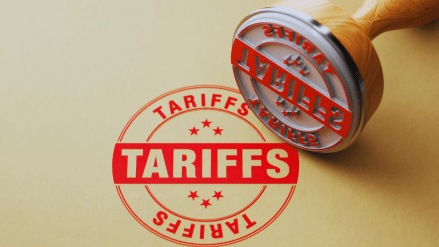By Atanu Biswas
By now, everyone knows that Donald Trump is fond of tariffs, which he claims is the most beautiful word in the dictionary. He even frequently uses the threat of tariffs as a negotiation tactic. However, many economists might disagree with Trump. Forget about Adam Smith; there was a certain Milton Friedman in the recent past who vehemently opposed tariffs, arguing that free trade would boost economic growth, reduce consumer costs, and foster innovation and competition. Even modern stalwarts like Paul Krugman and Joseph Stiglitz would oppose tariffs.
Who cares, though? As the world is trembling due to Trump’s tariffs, what impact would these have on American consumers, then? Undoubtedly, a tariff is a protective measure. However, a country cannot achieve self-reliance overnight. And tariffs “protect the consumer very well against one thing”, as Friedman stated. “It protects the consumer against low prices.” There will inevitably be a price hike in the country that imposes tariffs.
Impact on consumers and businesses
While India and other countries are experiencing shocks as a result of unfairly high US tariffs, American Marxian economist Richard Wolff recently claimed that the US is positioning itself as the “world’s tough guy” against India, but it’s only shooting itself in the foot by pushing the BRICS as an economic alternative to the West. He compared the US directives to a mouse striking an elephant with its fist.
Indeed, startling US government data released on August 1 revealed that the country’s employment growth has slowed significantly over the preceding three months, which could very well be a result of these tariffs. However, Trump didn’t agree with the data, and he fired the Bureau of Labor Statistics head. Simple.
Naturally, someone has to pay the price when tariffs are added to a large number of imported goods in the US. However, who will? Trump claims that foreign countries and companies are bearing the burden. However, data indicates that the tariffs imposed by the Trump administration as its preferred policy tool are costing American companies and businesses money.
Rising inflationary pressure
Goldman Sachs forecasted in early July that the effects of Trump’s tariffs would begin to show in US earnings. The forecast, of course, didn’t sit well with Trump. Goldman Sachs economist David Mericle stated that the company was committed to the contentious prediction that tariffs will start to affect consumer wallets, despite President Trump’s scathing criticism. “Eventually, by the fall, we estimate that consumers would bear about two-thirds of the cost” from tariffs, Mericle said.
Then, according to a recent Goldman Sachs analysis, companies will raise prices and progressively transfer the cost to customers. In a report released on August 10, Goldman Sachs analysts, led by the bank’s chief economist Jan Hatzius, estimated that by June, US consumers had absorbed 22% of tariff costs, but that share was expected to rise to 67% by October. Goldman Sachs predicts that the core personal consumption expenditure index, one of the Fed’s preferred indicators of inflation, would reach 3.2% year-on-year in December (which was 2.8% in December 2024). Economists at Goldman Sachs predicted that consumers would ultimately bear roughly 70% of the direct costs of the tariffs, and that if the spillover effects of domestic producers raising their prices—which has already happened and is predicted to continue—are taken into account, the total could reach 100%. An enraged Trump quickly demanded that the investment giant dismiss its chief economist or “just focus on being a DJ”. However, despite Trump’s fury, Goldman stuck to its analysis.
Tariff-driven price increases are a slow boil for a number of reasons: Tariffs are lower than most people had expected; businesses loaded up their warehouses with pre-tariffed goods; Trump’s erratic approach to tariffs has prevented the majority of them from taking effect for months, and many items are exempt (at least for the time being); higher costs have been split by entities along the supply chain, reducing the impact on the retail store. Tariffs usually take several months to permeate business supply chains and appear in the prices that customers pay at retail establishments.
Still, the cost of some imports that the US significantly depends on, such as sporting goods, tools, linens, household furnishings, and toys, has increased, according to recent Consumer Price Index inflation figures. According to newly-released research by Harvard Business School professor Alberto Cavallo and colleagues, as of August 8, domestically produced goods are running 3% higher and imported goods are costing 5% more than pre-tariff trends indicated, albeit slowly. “A year from now, maybe two years from now, we’ll notice that consumers ended up paying a significant amount of the tariffs even if they didn’t notice the increases right away,” he said.
Additionally, American firms surveyed at the end of 2024 expected to raise their pricing by 2.5% in the upcoming year. The Atlanta Fed said those projections jumped to 3.5% by mid-May. According to a State Bank of India analysis, the new levies could reduce US GDP growth by 40-50 basis points, and inflationary pressures will probably increase as a result of rising input costs and a weaker dollar.
Overall, Trump may deny any evidence now, fire federal employees, or (at least) request that any private organisation fire its economist. However, it may become increasingly harder to hide or ignore as the scars of tariffs become more noticeable in society and the consumer market. With the 2026 mid-term election approaching, will Trump finally feel the heat and take action? Even if he does, would it be too late for both Trump and the US?
The writer is professor of statistics, Indian Statistical Institute, Kolkata.
Disclaimer: Views expressed are personal and do not reflect the official position or policy of FinancialExpress.com. Reproducing this content without permission is prohibited.
